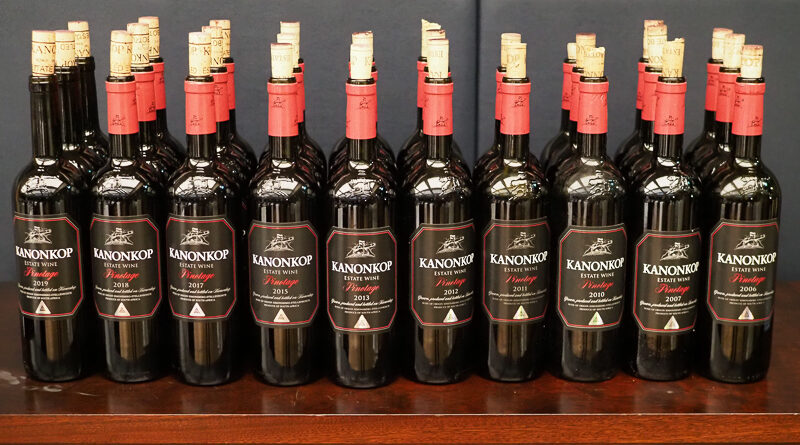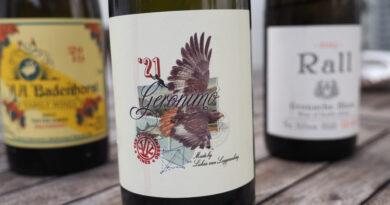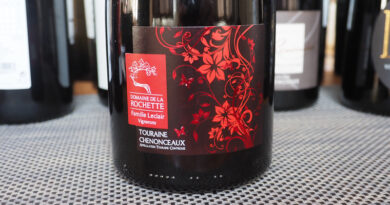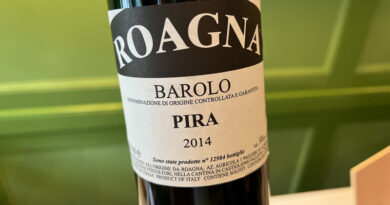Taking Pinotage seriously: a vertical of Kanonkop’s Black Label Pinotage
Pinotage is a grape variety that has struggled to be taken seriously. It has wrestled with a reputation of making wines with a certain flavour – one that not everyone finds agreeable. Bad Pinotage often has a distinctive sweet and sour character, often with some bitterness. Of late, though, its reputation has improved quite a bit, and a lot of the thanks have to go to one producer: Kanonkop. They’ve taken it seriously for decades, and the Kanonkop Pinotage is a banker for cellaring. Their previous winemaker, Beyers Truter, became known as Mr Pinotage. Current winemaker Abrie Beeslaar came to Kanonkop as an understudy to Truter in 2002, and took over in 2003 – and he’s kept this focus. A big step was when he began making an ‘icon’ level Pinotage, the Black Label, in 2006.
Abrie is keen to change people’s minds about Pinotage as a variety. It’s a relatively recent one, as grape varieties go. In 1924. Professor Itzak Perold took pollen from Pinot Noir and flowers of Cinsault and made a cross. In 1925 the first seeds taken from this crossing.
But this new variety almost didn’t make it. For some unknown reason Perold planted the seeds in his residence garden at the University in 1925. Two years later he left to work with the KWV, leaving the vines growing in his now untended garden. This new crossing was saved by a young lecturer Dr Charlie Niehaus when Perold’s garden was cleared up, and the four plants were replanted in the nursery at Elsenburg Agricultural College by Prof CJ Theron, who later showed the vines, which he had grafted, to Perold. This was when the name Pinotage was coined, and gradually people began to plant it and make wines from it.
The first experimental varietal wines were made in 1941, and the 1953 first commercial plantings went into the ground at Kanonkop, and these vines are the ones that the Black Label is made from. 1959 the first commercial Pinotage was bottled under the Lanzerac label.
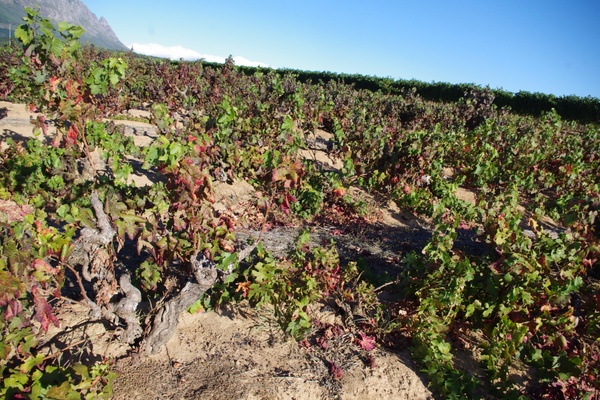
But it would be wrong to think that a cross like this shares the characteristics of the two parents, in some way blending them together. That’s an attractive idea, but it’s not how grapevine genetics work. Grapevines don’t breed true because they have a high level of what’s called heterozygosity. [Putting this simply, it means that at each position where there is a gene (they come in pairs), they are often different.] So if you mate Pinot Noir with Pinot Noir and plant the seeds, each seed would give you a new variety, not Pinot Noir. They’d vary widely in their properties. And think of many of the famous varieties: they don’t resemble their parents. Cabernet Sauvignon is a cross of Sauvignon Blanc and Cabernet Franc, for example. And Pinot Noir crossed with Gouais Blanc (a white variety) has produced among others Chardonnay, Aligoté, Melon and Gamay. So it’s best just to think of Pinotage as its own variety rather than dwell too much on its parentage.

So, the Kanonkop Black label Pinotage. Yesterday (May 10 2022) Johann Krige (proprietor) was in town with Abrie Beeslaar to take us through a vertical of Black Label Pinotage. This is the first time an event like this had been held, so we were all quite excited to see how these wines were showing.
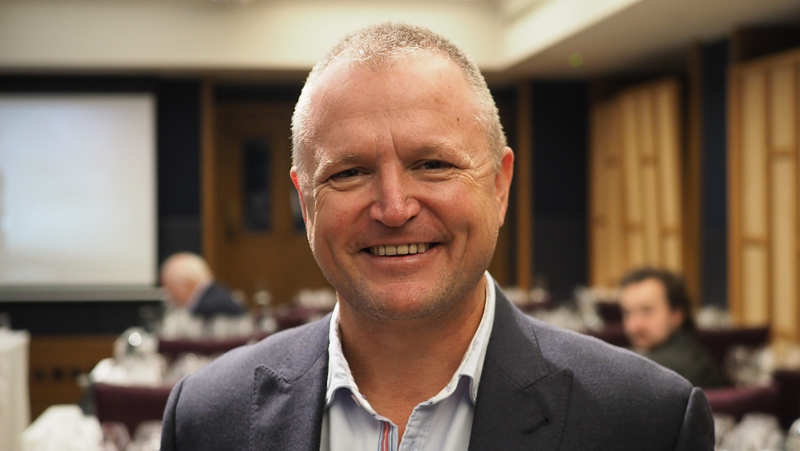
‘As you can hear,’ began Abrie, ‘we haven’t been speaking English for two years now.’ He explained that the Black Label Pinotage was a wine that asked to be made. ‘This wine is unique and different: it wasn’t necessarily better than the Pinotage we were making, but it had an identity. I wanted to show people what old vine Pinotage tasted like.’
‘This wine developed from the soil upwards,’ he says. ‘It was something the vineyard showed me. This in my view is how wine should develop, not from the boardroom down.’
Kanonkop has a reputation for being unpretentious, and this shows in the winery. ‘Our cellar isn’t polished,’ says Abrie. ‘it’s not like Bordeaux.’
What’s changed since 2006 since this wine was made? In 2016 they brought in optical sorting for all their grapes, and this discards up to 1.5% of the grapes that come in. ‘It’s not much but when you see what you are losing it’s significant,’ he says. He doesn’t do any whole bunch because he says the stems are too green and tannic. The other thing that has changed is that they’ve had some pruning consultancy from Simonit and Sirch, so they now do this a little differently, and the old vines have responded well. Another factor in the vineyards was the five years of drought in the Western Cape from 2015 onwards. This had an effect on the carbohydrate reserves stored in the plant, and this affected the budding in the spring, which was really uneven.
Black Label comes from a 3.8 hectare parcel on the farm that is on a northern slope, and it’s the lowest of the Pinotage vineyards. It’s Block 202, which is bush vines planted in 1953, at a spacing of 2.7 x 1.2 m, on R99 rootstock. The soils here are old. ‘The southern tip of Africa wasn’t covered by an ice cap so the soils carried on evolving and developing. Originally there were a lot of shales, but over the years the granite pushed through the shales. All the soils near the Simonsberg are granite.’ The Kanonkop farm has decomposed granite coloured red by oxidised iron.
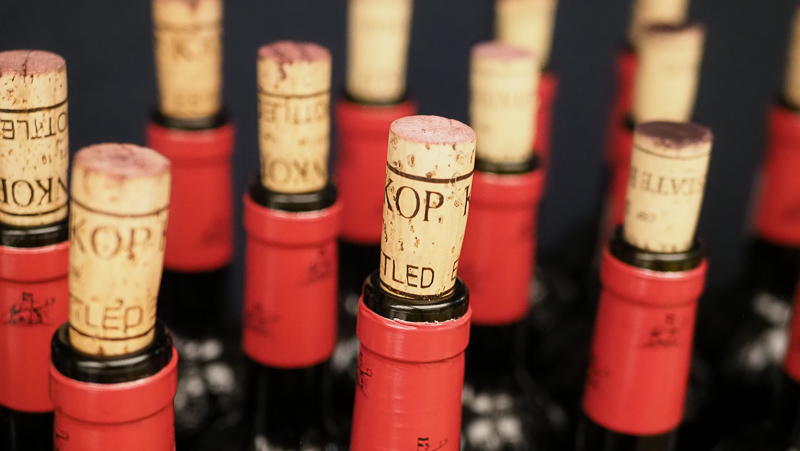
So why did Pinotage get such a bad reputation? Abrie says that these bad old Pinotages were because of winemaking. ‘We came out of isolation in the 1990s and we had our own style. Underneath that we were making red wine as red wine. The old guys added two cans of acid for this variety and one can of acid for that variety. For Pinotage you can’t do that.’
Abrie explained that Pinotage is the variety that has the highest pH, and the highest malic acid. It matures fast and veraison to picking is just four weeks. It also ferments fast and a typical fermentation would be just four days. This fast fermentation gives temperature spikes, especially in the caps, and this can cause extraction of the wrong things from the skins. One of the off flavours in Pinotage is a bitter-tasting compound called acrolein, caused by bacterial activity in the high pH wines as they develop. ‘There are a lot of things that can go wrong with this variety, and lots of these things weren’t understood in the 1990s,’ says Abrie. For this reason Kanonkop are very careful with their ferments, which all take place in shallow open top fermenters, and they do sterile filtration after malolactic fermentation.
Like many old vineyards in the Cape, these 1953 plantings are affected by leaf roll virus. This affects the vines at the end of the season: the phloem gets blocked and the leaves turn pretty colours. It means that with some red varieties, virused vines have trouble ripening the grapes. ‘Luckily with Pinotage it is early-ripening variety,’ says Abrie. They pick these old vines before the virus kicks in. Clearly, they aren’t going to replant these blocks, but elsewhere on the farm they are vigilant about virus. ‘Every vineyard we replant we keep 100% clean,’ says Abrie. ‘We use all the products available on the market to keep the vineyards clean, and we never work from an infected vineyard to a clean vineyard.’
‘One of our colleagues has a very strict regime,’ he says, ‘but it set them back 10 years – he made a sacrifice to get that farm clean.’
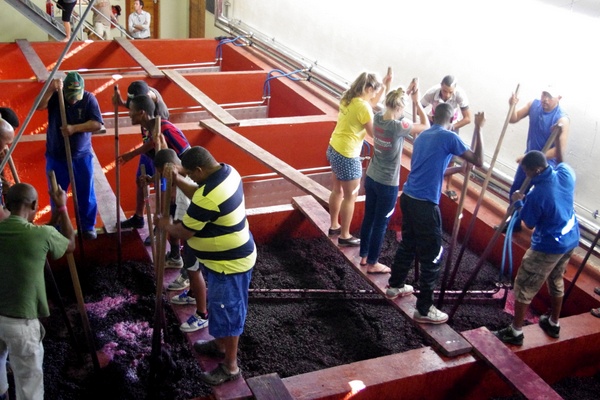
In the cellar they make the wines in an old way in shallow lagares, punching down by hand at regular intervals. They want to do a lot of extraction before there’s much alcohol present, and with a fast fermenter like Pinotage you have to be careful after a few days. ‘You have to extract what you need and then separate the skins from the juice,’ says Abrie. The temperature of the cap never goes more than 2 degrees above the juice. In larger ferments you have cap temperatures of 35 C, which is very extractive. The open tops are shallow so it loses about 0.5% alcohol, and the wine doesn’t get reductive: oxygen gets in easily to stabilize the wine.’ Abrie uses a lot of new oak. ‘We believe in wood, and if you have the right wine it plays a part in adding value to the final product.’
THE WINES
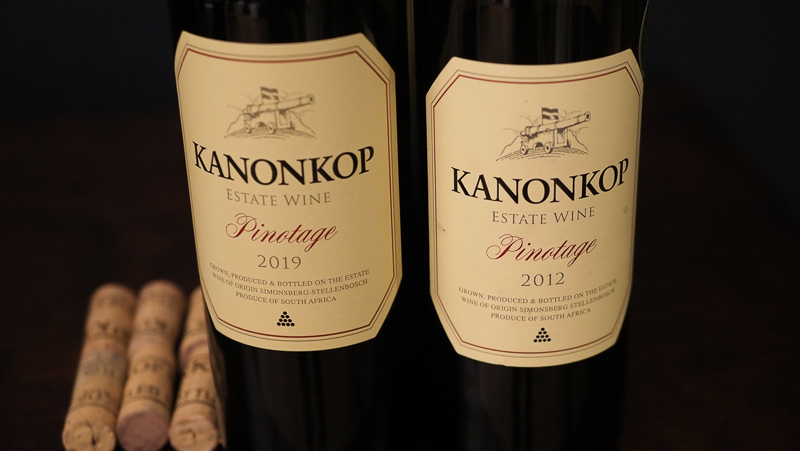
Kanonkop Estate Pinotage 2012 Stellenbosch, South Africa
14.5% alcohol. Sweetly aromatic with some notes of malt as well as sweet berry fruits. The palate shows good concentration of ripe, sweet fruit with some savoury notes of leather and dried herbs. There’s some evolution here and a mellow elegance: drinking very well now. 92/100
Kanonkop Estate Pinotage 2019 Stellenbosch, South Africa
14.95% alcohol. Vivid, expressive black fruits nose with some spicy detail and also some floral red fruit characters in the mix. The palate is fresh and supple with lovely sweet cherry and raspberry fruit, a touch of sweet, spicy oak and appropriate structure. Lovely fruit here: vivid, direct, well balanced. 94/100
BLACK LABEL
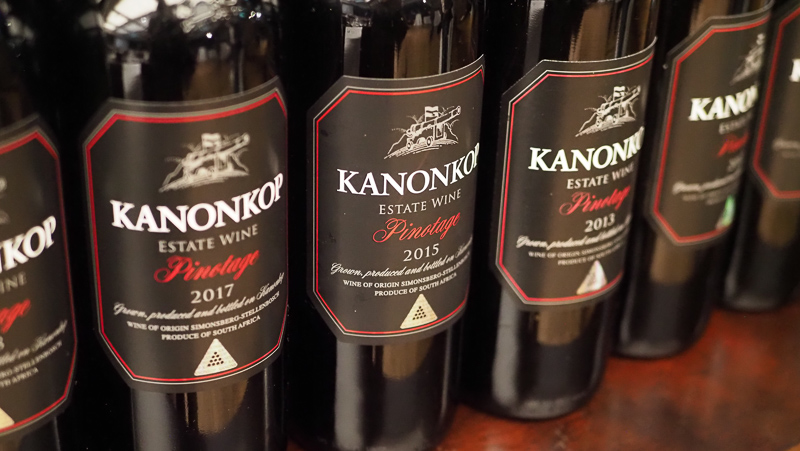
Kanonkop Black Label Pinotage 2006 Stellenbosch, South Africa
14.5% alcohol. Fresh, ripe and structured with mellow, sleek, ripe berry and black fruits and a lovely soft mouthfeel, but underneath this there’s still some tannin. There’s a nice brightness here, allied to the smoothness. Lovely harmony here with nice sweet berry and cherry, just a twist of damson on the finish. 94/100
Kanonkop Black Label Pinotage 2007 Stellenbosch, South Africa
14% alcohol. Floral, elegant, slightly sappy aromatics with sweet cherry and berry fruits. Supple palate is elegant and fine with some juicy notes and a bit of grip on the finish. This is a really elegant wine now, offering supple fruit and also a bit of grip that suggests it has a future ahead of it. A little bit of wood evident, too. 95/100
Kanonkop Black Label Pinotage 2010 Stellenbosch, South Africa
14.5% alcohol. This is focused, structured and quite intense. Lots of tannin, with a grippy core to the palate, but it’s dressed in lovely ripe berry and cherry fruits with freshness and detail. There’s a note of tar and spice, and there’s a touch of pleasant bitterness on the finish. 94/100
Kanonkop Black Label Pinotage 2011 Stellenbosch, South Africa
14.5% alcohol. Brooding nose of black cherries and plums. The palate is structured, firm, but has a core of sweet fruit. It has some development, giving a warm, finely spiced mouthfeel and some softer notes of tar, fudge and dried herbs. Ripe and concentrated. 93/100
Kanonkop Black Label Pinotage 2012 Stellenbosch, South Africa
14% alcohol. Very high pH of 4.04. This is vivid and fresh with a bright edge to the sweet cherry and plum fruit. There’s a real volume in the mouth with smooth texture and ripe cherries and plums. Has good purity, and it’s beginning its ageing journey well. A nice marriage of ripe fruit and good tannic structure. 94/100
Kanonkop Black Label Pinotage 2013 Stellenbosch, South Africa
14.5% alcohol. Freshness and purity are the hallmarks here, with some ripe cherry and plum notes. Textural and expressive with the floral red fruits masking the tannins, and a brightness on the finish. Has lovely purity and should develop in interesting ways. 95/100
Kanonkop Black Label Pinotage 2015 Stellenbosch, South Africa
14.6% alcohol. This is still quite youthful, showing some sweet spicy oak alongside the well structured sweet berry fruits. Fresh floral cherries on the nose with some sappy green hints and a touch of woodsmoke. Then a luxurious, richly fruited palate with sweet strawberries, cherries and nice supporting oak. This is an impressively structured, lavishly fruited Pinotage with a bright future. 96/100
Kanonkop Black Label Pinotage 2017 Stellenbosch, South Africa
14.5% alcohol. A dark-fruited expression of Pinotage with blackberry, blackcurrant and cherry, with notes of olive tapenade, tar, coffee and woodsmoke adding intrigue and a concentrated palate with lovely intensity. It’s brooding and intense, combining lush dark fruit with good structure, and the future for this is a promising one. 96/100
Kanonkop Black Label Pinotage 2018 Stellenbosch, South Africa
14.61% alcohol. Intense nose of coffee, blackberries and cherries, and some spicy wood notes. The palate is fleshy and generous with sweet cherries, blackberries, spice, vanilla and coffee. The oak is quite present, but there’s good structure under the sleek black fruit. It’s more mid-weight in style – give it time for everything to come together. 93/100
Kanonkop Black Label Pinotage 2019 Stellenbosch, South Africa
14.6% alcohol. This is just a baby but it’s showing great promise. Supple, nicely concentrated cherry and berry fruits with firm tannins and well integrated oak. Nice red fruit character here with the potential to develop in a really elegant direction. 95/100
[Missing from this line up are 2008, 2014 and 2016. 2009 wasn’t produced.]
Find these wines with wine-searcher.com

